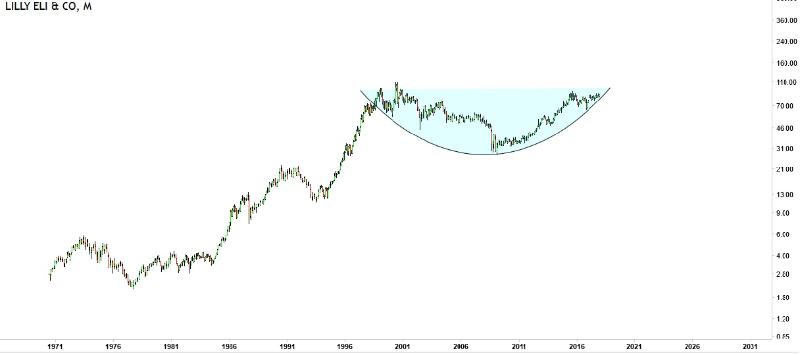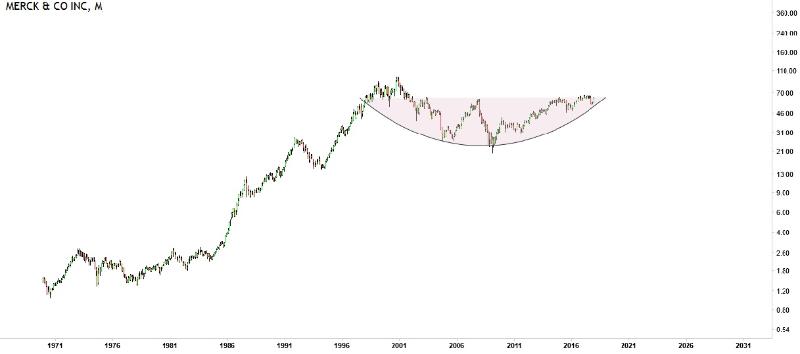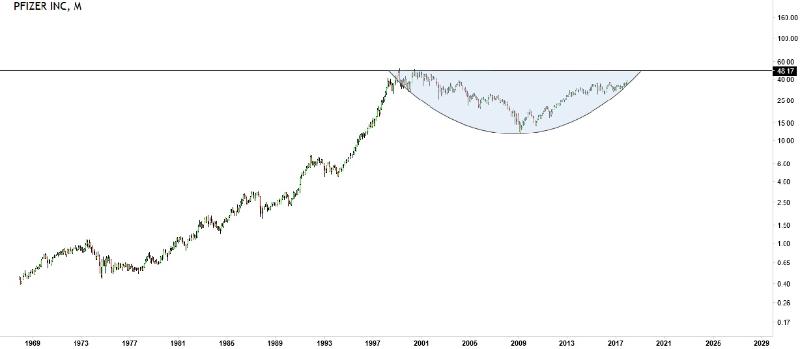Approximately 2 weeks ago, we wrote about 4 biotechnology stocks that are worth considering in 2018. Biotech falls in the broad healthcare sector. However, this article is about pharmaceutical stocks. We selected 4 great pharma stocks to consider in 2018!
We briefly explained the difference between biotechnology companies and the pharmaceutical companies. We would like to elaborate a little further here. The traditional drug manufacturers (also known as pharmaceutical companies) use simple chemical as raw materials, react together under certain conditions and, eventually, formulate the finished product into mainly tablet form if not in capsules. There is always an exception that some pharmaceutical companies do manufacture vaccines in solution form that makes them pseudo-biopharmaceutical. Paracetamol (Panadol) and antibiotics are easy examples of drugs that are produced by general pharmaceutical companies that have to be orally consumed. On the other hand, biotechnology companies produce biologics that is manufactured from living systems such as enzyme or microorganisms which has to be administered intravenously. This biologic is generally packed into ampoules or sealed bottles. More detail information can be referred from here.
Pharmaceutical stocks are bound to make a great comeback based on the data collected the previous year. More and more people are getting concerned about their health and this has drastically escalated the sales of the medicinal drugs across the globe. Stocks of companies like the Absolute Pharmacy are increasing drastically as the sale of medicine is proportional to the excellent service they are providing their client for their various health issues. You could click here to more about Absolute Pharmacy and find out how they have managed to stay on top with the services they are providing.
Though there are 7 major pharmaceutical ETFs, we will use XPH – SPDR S&P Pharmaceuticals ETF as a representation. This ETF is one of several options for investors looking for exposure to the U.S. pharmaceutical industry, a sub-sector of the health care. It can post big returns during periods of consolidation or as a result of advancements in medicine. InvestingHaven uses it as a way to gauge whether there is significant move to the upside or downside.
Weekly chart of XPH
The monthly chart of XPH has been consolidating sideway since Feb 2016. There is a possibility that it could mimic other sectors, and end up in a cup shape in the near future. The price action after week of 22 Jan are just a bullish projection. This projection will be invalidated once price breaks down hard below the potential cup support.
Pharma stock #1: Eli Lilly and Company (NYSE ticker – LLY)
Eli Lilly and Company is a global pharmaceutical company headquartered in Indianapolis, Indiana, with offices in 18 countries. Its products are sold in approximately 125 countries. The company was founded in 1876 by Col. Eli Lilly, a pharmaceutical chemist and veteran of the American Civil War, after whom the company was named. Lilly’s notable achievements include being the first company to mass-produce penicillin, the polio vaccine developed by Jonas Salk, and insulin. Lilly is currently the largest manufacturer of psychiatric medications and produces Prozac (fluoxetine), Dolophine (methadone), Cymbalta (duloxetine), and Zyprexa (olanzapine).
Monthly chart of Eli Lilly & Co
The cup shaped bottoming price action is almost completed in the monthly chart of LLY. Last traded price is 87.08. For the bullish care, it should not have problem reaching ~97.5 in 2018 although less than expected earning can pull the price down. Immediate downside support lies at ~82.3 and failure to support could see price going back to ~77.
Pharma stock #2: Bristol-Myers Squibb (NYSE ticker – BMY)
Bristol-Myers Squibb is a global biopharmaceutical company that develops and delivers innovative medicines that help patients prevail over serious diseases. It is a diversified company, led by their unique BioPharma strategy that leverages the reach and resources of a major pharma company paired with the entrepreneurial spirit and agility of a biotech firm. Hence, the company manufactures both oral tablets as well as biologic products that see to cure or alleviate illness such as cancer, HIV/AIDS, cardiovascular disease, diabetes, hepatitis, rheumatoid arthritis and psychiatric disorders
Monthly chart of Bristol Myers Squibb
The stock price of BMY had a huge cup consolidation pattern that dates back to 2000. At the time of writing, price trades at 64.25. Our upside target project will be ~76.8, if this multi-year resistance is breached, we expect the price to continue going up steadily. What happens if price breaks down? Immediate support lies around 59 followed by 51 if the former fails to support.
Pharma stock #3: Merck & Co., Inc (NYSE ticker – MRK)
Merck & Co., Inc. is a global health care company that delivers health solutions through its prescription medicines, vaccines, biologic therapies, animal health, and consumer care products, which it markets directly and through its joint ventures. The Company has operations in pharmaceutical, animal health, and consumer care. The most aggressive endeavour by Merck was the acquisition of Schering-Plough in 2009.
Monthly chart of Merck
It is not hard to see the elongated W embedded inside the cup pattern of MRK in its monthly chart. Immediate upside task is to clear 67 and at least getting to ~76.4 in 2018 before launching a breakout attempt at previous resistance of ~97 most probably by 2019. The first downside support is quite a distance away at ~54. Though we are bias to upside, price of MRK could consolidate for another few weeks before breaking 67.
Pharma stock #4: Pfizer Inc (NYSE ticker – PFE)
Pfizer Inc, the world’s largest research-based pharmaceutical company, discovers, develops, manufactures and markets prescription medicines in 11 therapeutic areas including oncology, cardiovascular, pain, neuroscience and infectious diseases, including HIV/AIDS. Pfizer is also the world’s largest animal health company. The most famous drug produced by Pfizer will be non-other-than the little rhombic blue pill – VIAGRA that use to help patients with erectile dysfunction problem. Many competitors are already allowed to manufacture their own version of VIAGRA when Pfizer’s exclusive market right expires in 2020.
Monthly chart of Pfizer
We believe our readers are able to tell us where the potential price target is for 2018. Yes, a challenge towards 48 – 50 is highly possible in 2018. On the flipside, the immediate support sits at ~36 after which 32 will be important should price reverse.
Generally the pharmaceutical companies are giving decent dividend with stable price movement but the growth could be very slower compare to biotech companies. There is also an emerging trend that these companies shifting towards biopharma to get into the biotech market because many of their generic drugs’ patents will expire one after another soon.
One of the most efficient ways companies are increasing their sales is by changing the pharmaceutical product wrappers using advance cost cutting machines which offers a better quality of packaging. This is proving to be beneficial to both the consumers and the company as the consumers get good quality packed medicines and the company builds good goodwill with the customers.
Be sure to consult financial adviser and healthcare expert for advice should you consider at least one pharmaceutical company in your portfolio.








